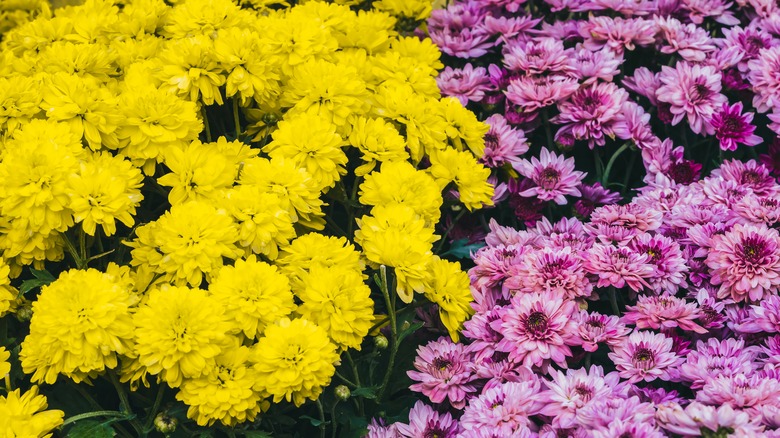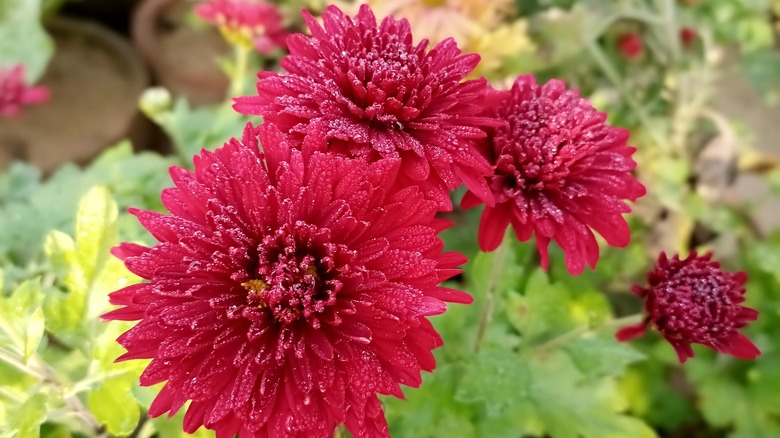Reasons Why Your Mums Aren't Blooming And How To Fix The Problem
Mums (Dendranthemum x grandiflorum) are autumn garden stars, ready to grace your yard with colorful blooms once temperatures begin to drop and days start to shorten. While mums aren't generally considered difficult plants to care for, there are several factors that can cause them to fail to bloom. Factors like insufficient sunlight, improper fertilizing, and poor soil conditions are common reasons many flowering plants, including mums, don't bloom, but there are additional factors like number of dark hours and improper pinching that can impact chrysanthemum blooms specifically.
Garden mums are technically perennials in zones 5 and higher, though many people opt to grow them as annuals, enjoying their flowers through autumn and then composting the plant. If you grow your mums as perennials, and want them to come back each year, then good care of the plant through spring, summer, and winter is essential for reaping prolific blooms in fall. Making common mistakes with your mums like not giving them enough winter protection, can not just result in fewer blooms, but can even kill the plants. As long as you protect your plants and place them in a good location you should be well on your way to plenty of flowers.
Water, soil, and sun for mums
Mums thrive in full to part sun, growing best in soil that has an acidic pH, so don't forget to measure the pH of your growing medium before planting and amend it if needed. Mums can struggle with soil that is too wet as their roots are prone to rotting, so well-draining soil is a must for healthy and long lived plants with plenty of blooms. Like many flowers that thrive in full sun, mums become floppy and can fail to bloom well if they are in too much shade.
In addition to providing your mums with the right soil and sunlight, it's also important to make sure they get adequate water and fertilizer. Using a fertilizer with too much nitrogen can be a recipe for plenty of foliage but few blooms, so opting for a balanced slow release fertilizer and avoiding excess fertilizer are crucial. While mums need to avoid sitting in soggy soil, it is also important to avoid letting them dry out. Digging your fingers a few inches into the soil to check if it is dry is the best way to ensure your mums get the optimal amount of hydration.
Pinching and daylight hours for mums
While many of the common reasons mums fail to flower are shared with other types of plants, there are also a few special things to consider when helping mums flower their best. Mums should be pinched regularly from the time they emerge from the ground in spring until about mid-July to help them branch and avoid becoming floppy. Forgetting to pinch them may result in just a few sad blooms on weak stems, while continuing to pinch back the branches too late into the season can cause them to fail to bloom before frost makes them die back.
Another special thing to keep in mind with mums is that they are triggered to flower when the length of nights becomes longer. This is why they flower in fall. Different cultivars require different amounts of darkness so be sure to check the requirements for your specific plant. If your mums aren't flowering despite the short days and long nights, check if any street lights or porch lights might be preventing them from enjoying the necessary amount of darkness and consider relocating your plant to a spot with less nighttime light pollution if necessary.


